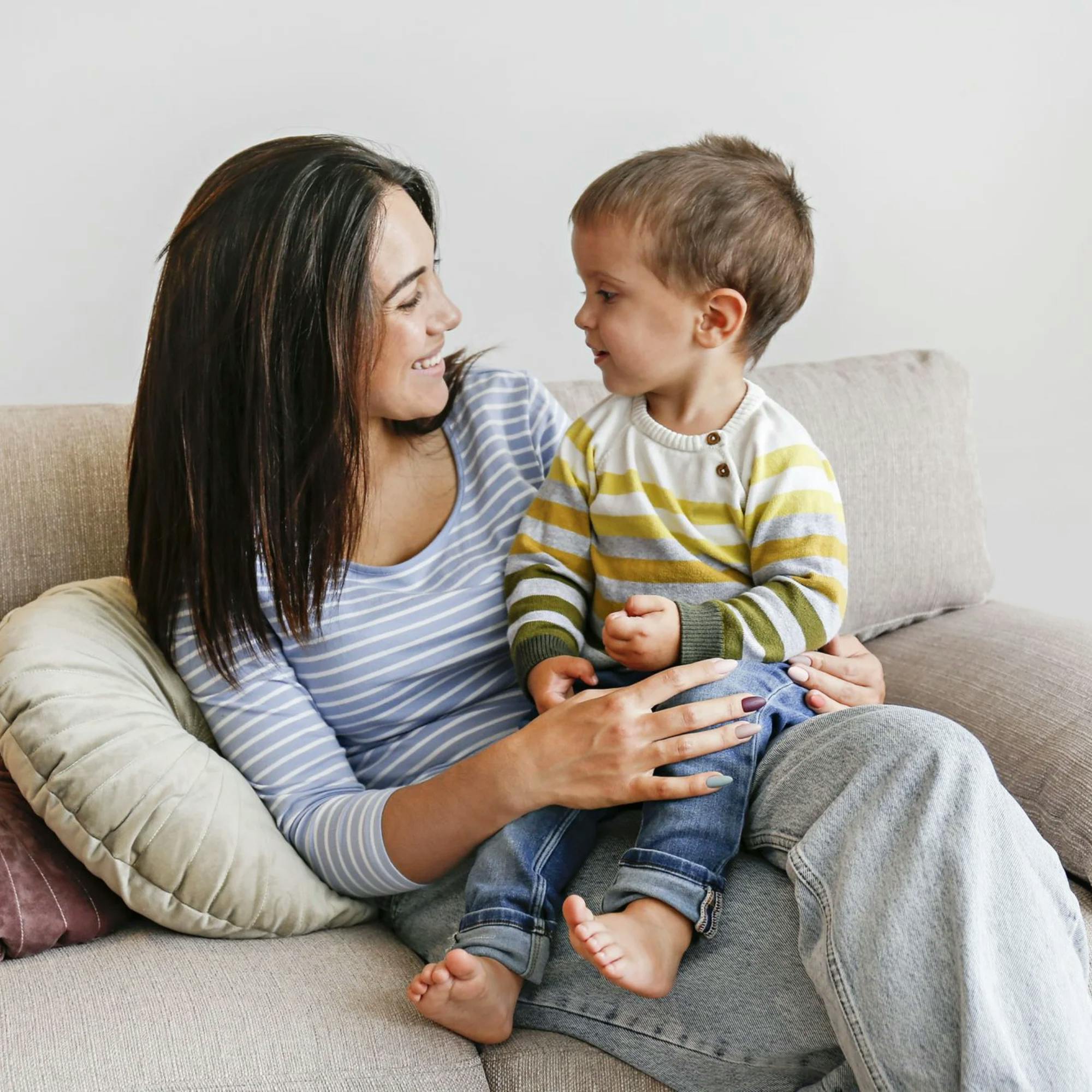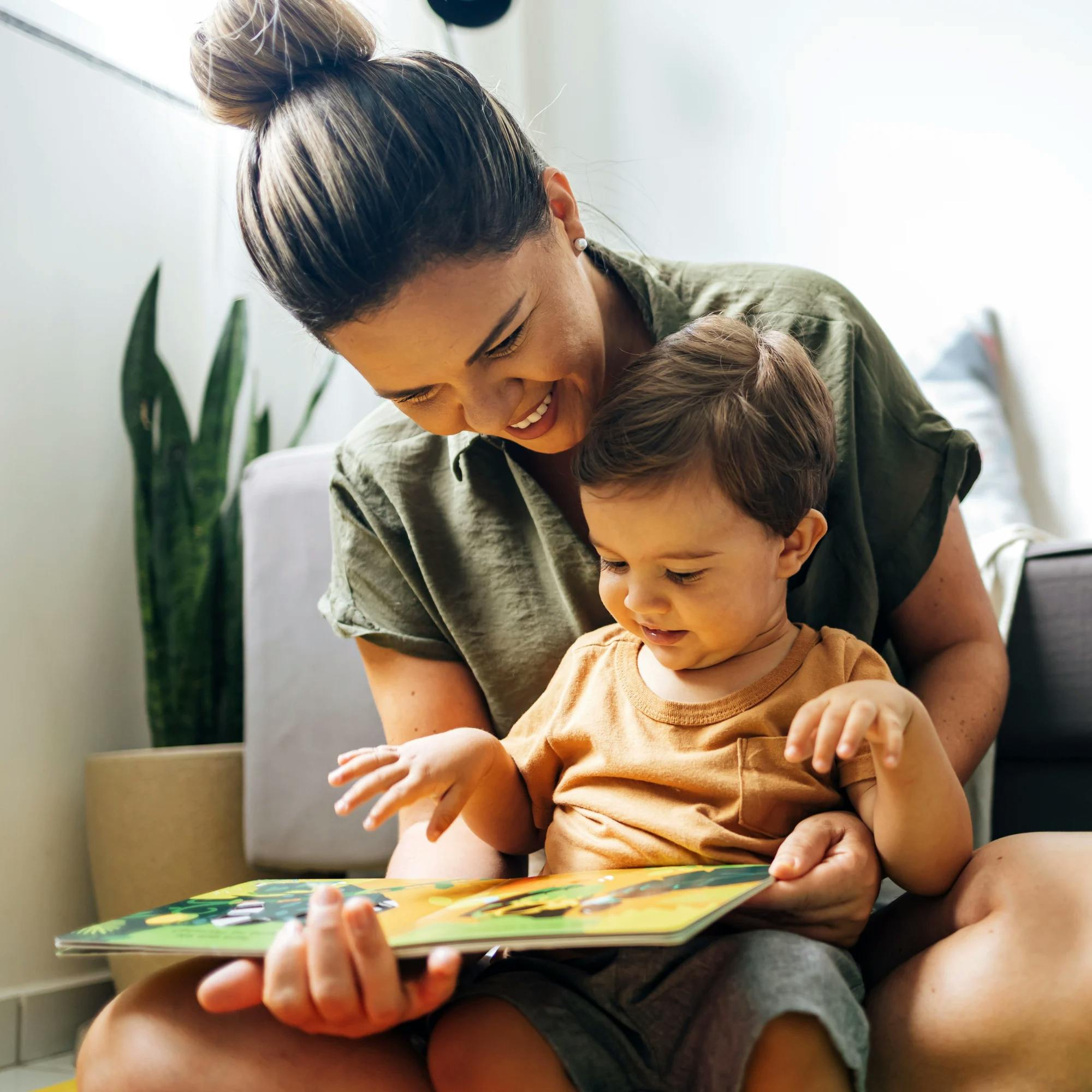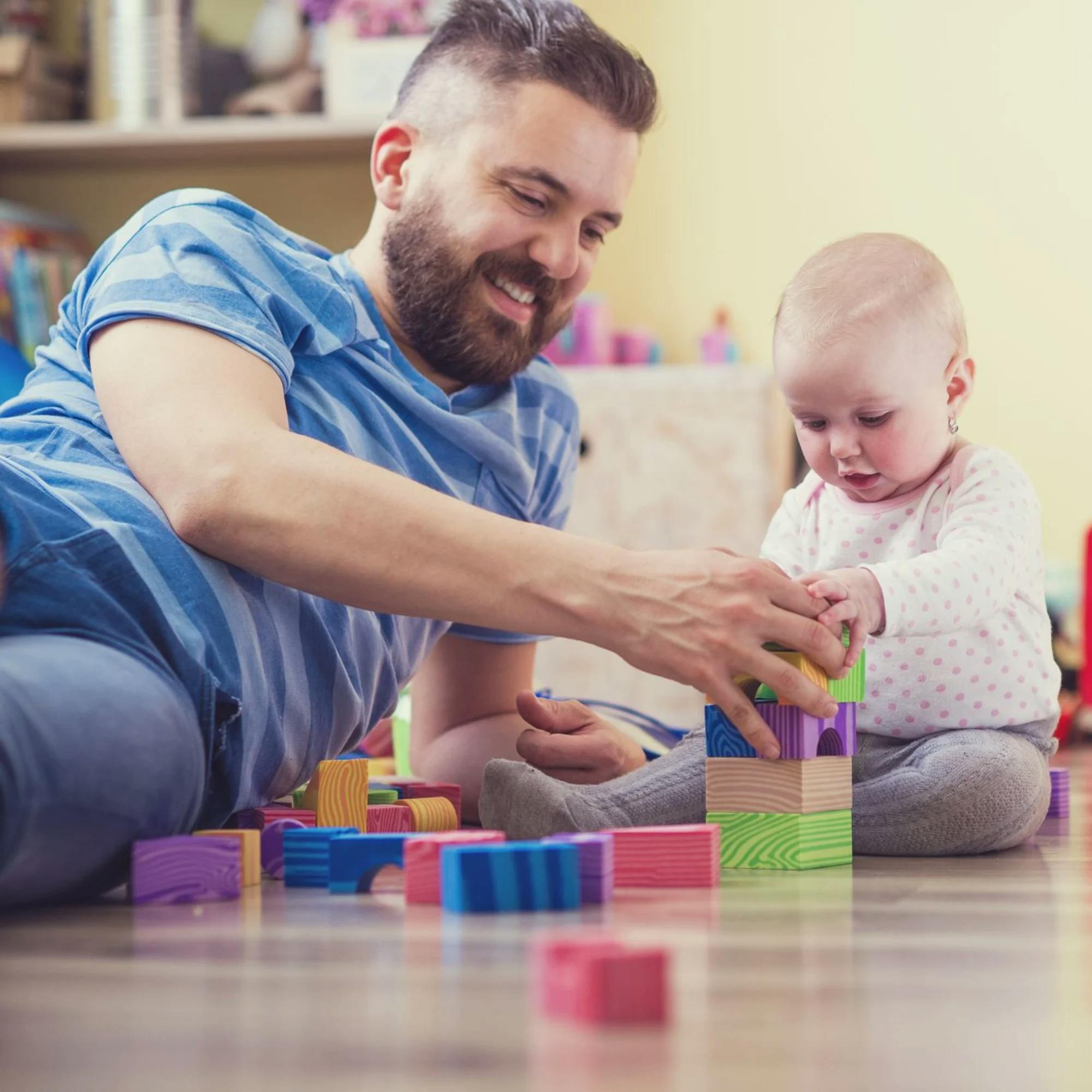
Using Natural Language Modeling to Help Your Child Talk
 Leanne Sherred, M.S., CCC-SLP
Leanne Sherred, M.S., CCC-SLP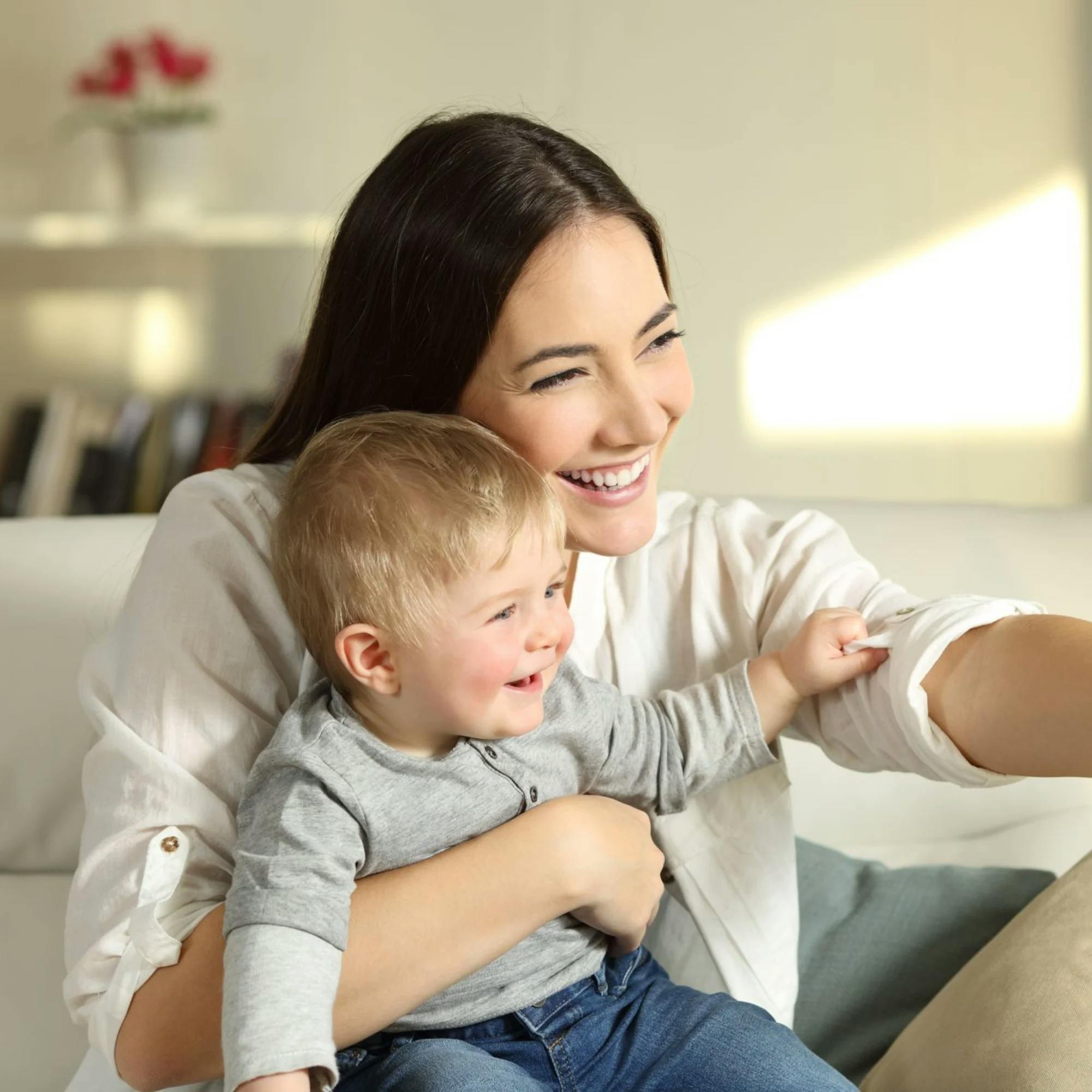
Natural language modeling is a strategy I use in every single speech therapy session that I have with young kids learning to talk. Also known as language expansion, it involves teaching your child to use more words. In this article, I break down what this looks and sounds like, as well as why it's so helpful for kids working their way up the language ladder.
Helping your toddler learn to talk
If you're a parent or caregiver to a child that's at least 1 year old, there's a good chance that you're trying to help them grow their communication skills. Babies let us know what they want by crying, but as kids get older we look for them to learn new ways of communicating.
When to expect your child's first words
Developmentally, babies usually begin to swap out crying for making gestures, like reaching with an open palm or pointing. Young toddlers might use gestures and vocalizations (sounds) at the same time. Toddlers usually start using words after they've had practice imitating sounds during play or other interactions. Children typically say their first word around age 12 months.

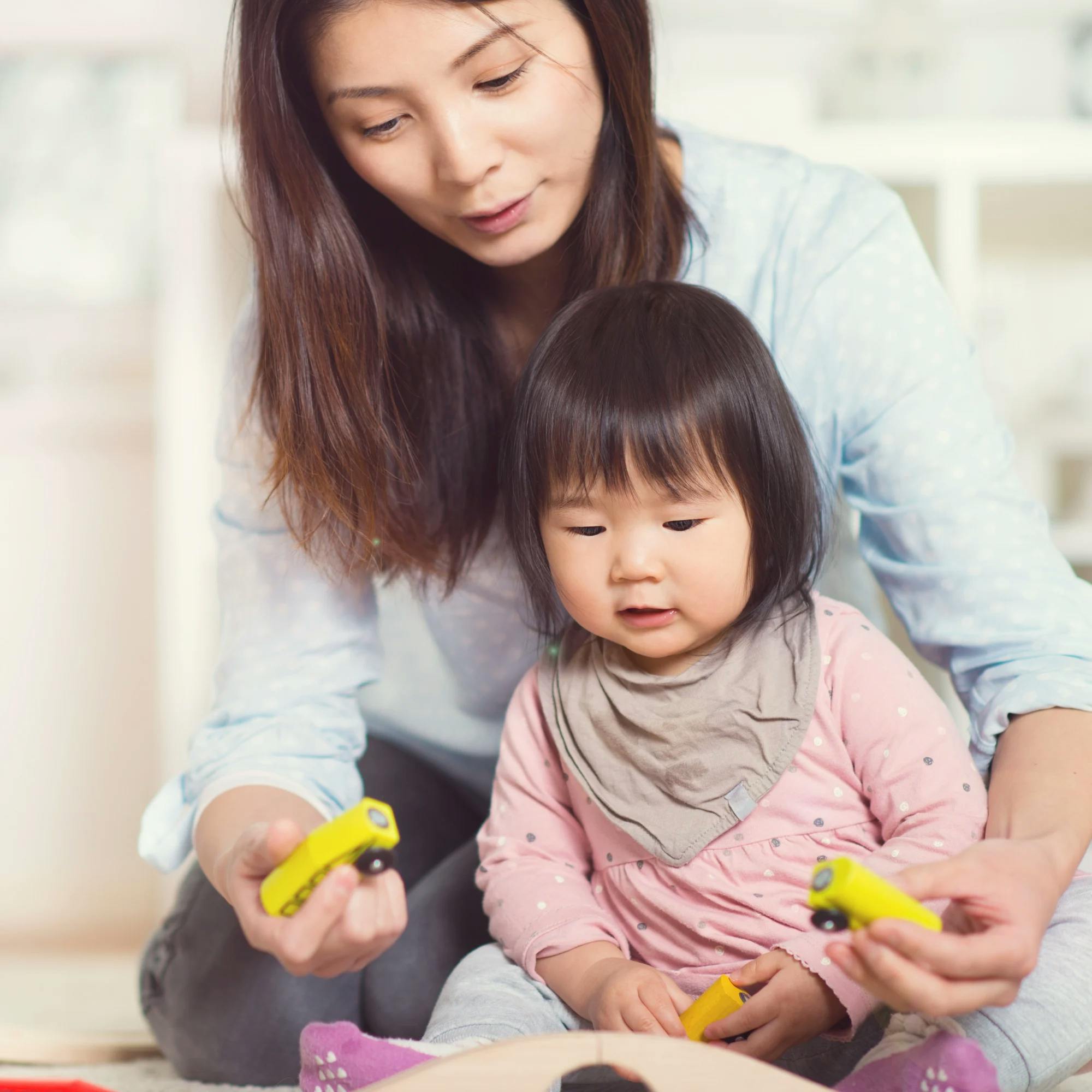
Modeling single words for your child
To use natural language modeling, consider what stage your child is in with their communication. Why? Because we're going to work just one step above that.
If your child is currently gesturing without using words, then we want to model, or say, one single word to show them what they could say in that moment instead of gesturing. For example, if your child is reaching for the counter where their cup of juice is sitting, you can model the word "juice."
Modeling phrases for your child
If your child is using single words, we're ready to show them how they can begin putting words together. Again, we're working just one step above what the child is already doing on their own.
So, for example, if your child is playing with a car and saying "Go," you could model a two-word phrase for them like "Go car!" If they're playing with their baby doll, pretending to put it to sleep and saying "Night, night," you could model, "Night, night, baby."
Modeling requests for your child
Another way to model language is to show your child how to ask for something. If your child is both reaching for their juice and saying "juice," you could model a request like "Juice, please" or "I want juice." If they imitate that request, you could model a phrase with three or four words, such as "I want apple juice."
Tips for modeling language for your child
Repetition is key for kids. They need to hear words and phrases several times before learning to say the words themselves. So you might model two or three times before giving them the juice. Or, you can continue to say "Go car" throughout your playtime together.
You can watch this video from one of our speech therapists to see language modeling in action with a toddler!
When should I try language modeling with my child?
The beauty of natural language modeling and expansions is that they can be used during all kinds of daily routines. You can talk about what you're doing or what your child wants during everyday activities like eating a snack, playing, going to the park, bath time, or bedtime. You don't need to set aside special time for practicing!

What if my child doesn't imitate the words I modeled?
If your child doesn't imitate your words right away, that's okay. You're still letting them hear simple language models that will help them understand language and prepare to try imitating the next time.
Try not to get stuck repeating the model more than three times. Don't pressure your child or insist that they try it for themselves. If they still haven't imitated you after three attempts, they aren't likely to, and there's a good chance they may become frustrated. Move on and try again later!
How Expressable Can Help
Concerned your child isn't reaching age-expected milestones? Looking for communication support from a professional? Expressable is a national online speech therapy practice serving children and adults. We treat all major areas of communication and feeding, offer flexible hours including evenings and weekends, and accept most major health insurance plans. We’re proud to have earned more than 3,000 5-star reviews from our clients (4.9/5 average).
Our therapy model is centered on parent and caregiver involvement. Research proves that empowering caregivers to participate in their loved one’s therapy leads to better outcomes. That’s why we combine live, 1-on-1 speech therapy with personalized education and home practice activities for faster progress.
Communication is more than words. It’s how we share how we feel and show who we are. We’re here to help you or your child do just that.

